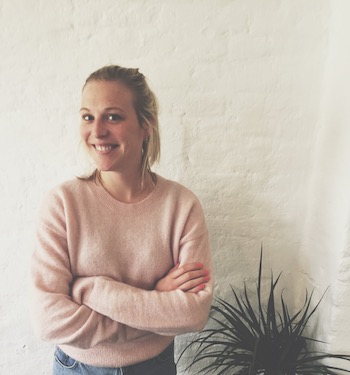Maybe it was the tiny room in my beloved WG on Berlin’s Torstrasse (or the fact that I owned way to many clothes), but last summer I increasingly felt the urge to get rid of everything in my closet. The more I owned, the more powerless I felt to change my over-consumptive habits. I began researching minimalism and conscious consumption in a desperate attempt to free myself from my closet’s ever expanding pile of possessions.
Nothing quite brings me joy like the ethically produced coffee at my favorite cafe or the locally sourced salad bowl at the restaurant nearby work. After giving it some thought, I realized I was already invested in the idea of purchasing sustainable and ethical foods, so why should the clothing I put on my body everyday be any different? Shouldn’t the textile used be sourced from ecologically beneficial farms and the people who make it have suitable working conditions? Why should my clothes come at the expense of other people and our planet? Was I really supporting the dirtiest and most polluted industry in the world?* Last but not least, how could I still call myself a feminist if the clothes I was wearing were predominantly made by women who are facing harassment, discrimination, low-pay and excessive overtime?
These questions swirled in my head as I wrestled with ideas on how to make a real change.
It was time to face the skeletons in my closet. I opened the door only to see the giant mess that was controlling my life. A pile of abandoned €5 Euro t-shirts that had quickly become worn out from washing stared down at me from the top shelf. Why did I ever think these were a good bargain? I had to spend so much money replacing them overtime that I should have just made the initial investment in a high quality one that lasts longer. Then there was the cheap jumpers, scratchy and uncomfortable, things I only purchased during the hight of a trend. I didn’t actually like the way they feel on my body so I seldom wear them.
Sound familiar? You’re not alone. Fast fashion and the overpowering presence of marketing has cultivated a misconception that we have have to follow every single trend. But we don’t.
So if you have a similar setup and are ready to purge your closet, here’s my advice for you.
The first step in tackling my closet nightmare was deciding what should stay and what must go. Look at each item and ask what is this doing in my life? Does it serve a functional purpose? How much will I use this in the future? I found it extremely helpful to gain insight before beginning this pairing down journey from the book Magic Cleaning (2013, Marie Kondo) and the movie Minimalism (2015, Matt D’Avella). Hearing the stories of people cleaning up their lives somehow triggered extra motivation to do the same for myself.
While throwing all of these things away is tempting, this would immediately go against my desire to make sustainable choices. Some things can be repurposed, maybe keep a few of your old t-shirts to use as cleaning rags or maybe you are the creative type and can turn your jumpers into a quilt, pet bed, or pillow.
Then there is the selling or donating option. This is primarily for clothes which are still in good condition. Reusing clothes truly is the most sustainable choice since it means that less new clothes will need to be produced. Go to your local thrift store or donation center to see if they are willing to take your clothes off your hands. Personally, I sold lots of clothes via Kleiderkreisel and on flea markets.
Once your closet has been emptied, you will feel a sense of relief, but what do you do when you realize you need something new? Think twice before you buy - this will protect your purse and the planet (two in one - awesome). Answering these three question has led me to a closet full of pieces I can mix and match:
- Do I really need it?
- Can I combine it with my other clothes?
- Does this come from a sustainable and ethical source?
By following these guiding questions you are carefully considering the value of each item rather than seeing it as a disposable product. This kind of self reflection on our material purchases is essential in order to refrain from the over consumptive patterns that today’s immense marketing networks try to tempt us into participating in. Check out the following fair fashion labels that are moving away from mass produced fast fashion and instead promote fair, sustainable and slow fashion.
[recommended:2884]
One thing that really helped me the most to curb my over consumption habits was making a short list of what you need. No summer dresses? Great, add dresses to your list and focus on this single item. Do not add things you have already, period. Buying things you need, ensures that you will like and wear them.
My closet battle took place over a year ago - I couldn’t be prouder to now say that I have a curated closet. I like everything I own and seldom feel I don’t have anything to wear. I feel good about my new ethical clothing choices and feel better about the items I decided to keep. Whether you follow my path or find your own - starting to make conscious choices will make you a great sustainable shopper. If you are having difficulty finding fair fashion choices, Instagram can be a powerful tool. I get a lot of inspiration from there. More and more influencers are promoting fair and sustainable brands. Same goes for blogs. Here are some of my favorite influencers:
At Fine Yellow we call it “conscious clothing” for a reason: It’s not “all or nothing”: Change your shopping habits one piece at a time and, most importantly, make educated decisions.
And when in doubt, fight the temptation, leave that 5€ t-shirt and listen to Vivienne Westwood - 'Buy less, choose well, make it last’.

Gina Voß is co-founder of Fine Yellow, an online marketplace for conscious fashion. Fine Yellow shows that conscious clothing is stylish, affordable and fun.
*(25% (!) of chemicals produced worldwide are used for textiles) (Danish Fashion Institute, 2013)










